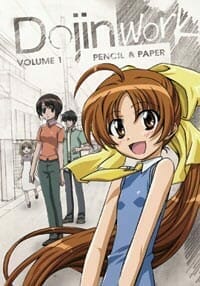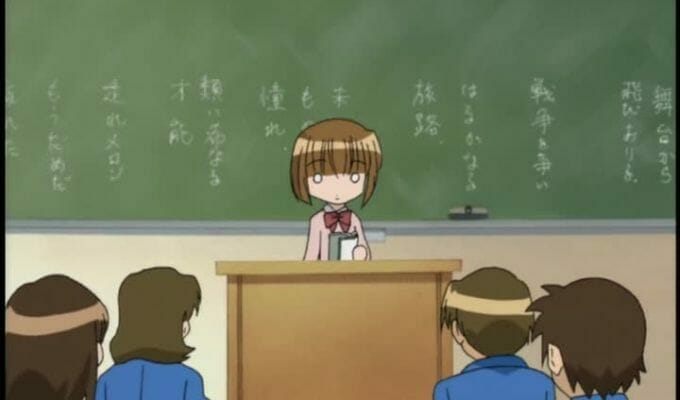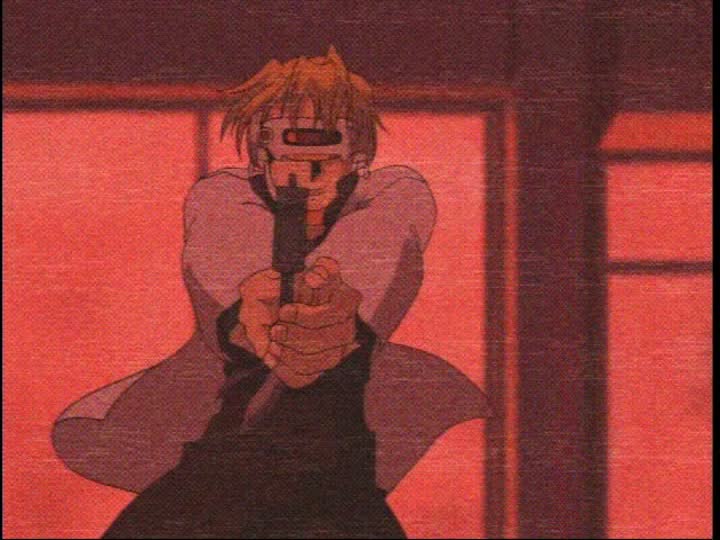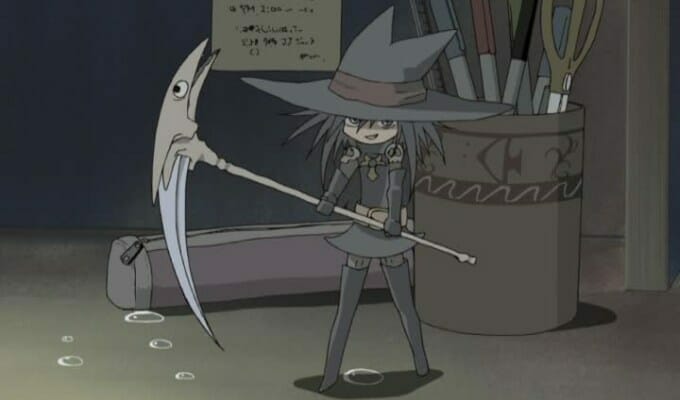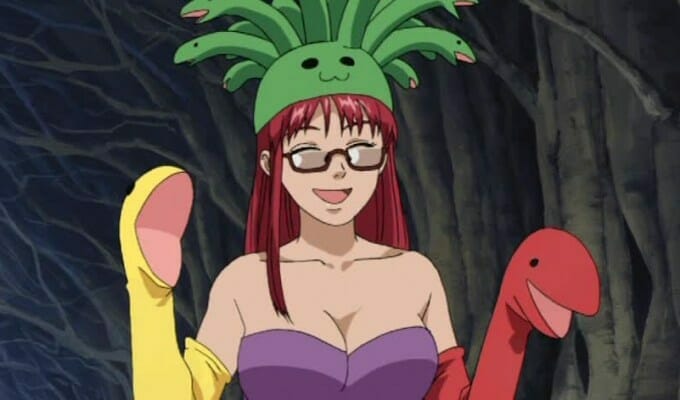 What Is It?
What Is It?
Dojin Work is a 12-episode series steeped in the world of fan comics, or doujinshi. The series, which was directed by Kenichi Yatani and animated by Remic, hit Japanese airwaves on July 4, 2007.
Dojin Work focuses on Najimi Osana: an enterprising lass that finds herself out of a job, and short one bicycle. To make a bit of extra scratch, Najimi agrees to help her friend Tsuyuri for a day. Unfortunately, Najimi doesn’t know her friend as well as she thinks. Tsuyuri is a fan comic, or doujinshi artist that runs the Panty Revolution publishing imprint. Her releases are released under the pen-name “Bloomer Girl.” and her particular forte is hardcore adult material. Tsuyuri ropes poor Najimi into selling her perverted books, with the promise of a fantastic payday as a lure.
Upon noticing just how much her friend pulls in over an average weekend, Najimi decides that she wants in on the action. After all, writing, drawing, and publishing a manga has to be easy if the bookish Tsuyuri can do it, right? Not exactly. Still, the experience isn’t without its merits, as she meets the various colorful characters that make up the doujinshi scene. It’s never a dull moment, as Najimi’s life is quickly filled with figures like the Justice, the over-protective artist, Junichiro the well-meaning stalker, or boys-live fiend Kaneru.
Why Was Is Passed Up?
Dojin Work was released as subtitled-only singles in 2009, with each volume retailing for $24.99. At this point, the market had already shifted to 13-episode sets, and prices had begun to level off. People had become accustomed to paying $30 to $50 for full seasons, and the market had grown hostile to the single-disc release format. A few straggling singles were making it to market at that point, which included Baccano!, Ah! My Buddha, and Bleach. However, by and large, many were more than happy to wait for the inevitable budget re-release, while they soaked up collections of Aria, One Piece, and FullMetal Alchemist.
During the month of the show’s release, Dojin Work had to content with a number of large competitors that included two One Piece releases, Ghost in the Shell 2: Innocence, Gurren Lagann, and Mobile Suit Gundam SEED Destiny. The combination of a declining release format, Japanese-only audio, and a strong field of competitors ensured that many would give the show a pass.
Why This Show?
Much like Comic Party before it, Dojin Work is a fun show that gives a glimpse into the strange world of doujin creators. However, unlike Comic Party, Dojin Work places the sentimental “manga is fun!” mindset into the back seat. Instead, the show drags viewers into a seedy, perverted world with a playful wink-and-nod approach.
And, of course, there’s the fact that Najimi serves as a perennial victim through the show. Tsuyuri delights in seeing her friend squirm, especially when it’s by her own hand. Tsuyuri subjects poor Najimi to abject humiliation, as she drags Najimi to the hentai corner of the local comic shop or forces the girl to buy (and complete) an erotic PC game. Even when not in Tsuyuri’s company, Najimi finds herself in compromising situations that include a bike chase with the police and a job in a maid cafe.
However, everything is carried with a biting sense of humor and a spastic pace, which help keep the show from being an exercise in sadism. Najii bounces back from her downtrodden moments in a heartbeat, as jokes and sight gags fly at a mile a minute. The show’s quirky characters are well-written, and breathe a great deal of life into the experience. Whether it’s Justice, the fatherly yet somewhat disturbing manga artist, or creeper customer Hoshi, viewers will find someone to laugh at, someone to cheer for, and someone to simply gawk at.
Closing Thoughts
I’m not going to mince words: Dojin Work is an incredibly mean show. Najimi is a perennial punching bag that gets just enough happiness to continue persevering through her day. However, the show manages to pull its punches just enough to make her failures and trials into something truly hilarious.
If there were one drawback, it would be that the show only spans twelve 13-minute episodes. The show was split into two segments: the anime, and a live-action feature starring the show’s voice actors. The show flies by far too quickly, and simply leaves the viewer craving more as the final credits begin to roll. This is far from a bad thing, though, as P.T. Barnum once said: “always leave [the audience] wanting more.”


